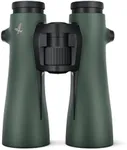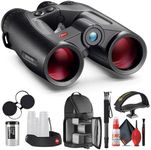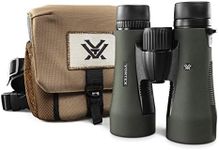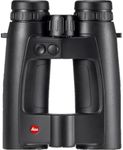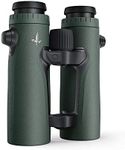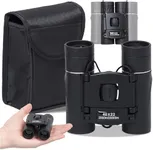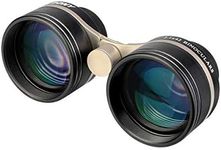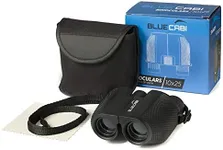Buying Guide for the Best Backpacking Binoculars
Choosing the right binoculars for backpacking can greatly enhance your outdoor experience, whether you're birdwatching, enjoying scenic views, or spotting wildlife. The key is to find a pair that balances performance, portability, and durability. Here are some important specifications to consider when selecting backpacking binoculars, along with explanations to help you make an informed decision.MagnificationMagnification indicates how much closer an object will appear compared to the naked eye. For backpacking, a magnification of 8x to 10x is generally ideal. Higher magnification can provide more detail but may also result in a shakier image and a narrower field of view. Consider your primary use: if you need to see distant objects clearly, go for higher magnification, but if you want a wider view and easier handling, stick to lower magnification.
Objective Lens DiameterThe objective lens diameter, measured in millimeters, determines how much light the binoculars can gather. Larger diameters (e.g., 42mm) provide brighter images, especially in low light conditions, but also make the binoculars bulkier and heavier. For backpacking, a balance between light-gathering ability and portability is crucial. A diameter of 25mm to 42mm is typically suitable, with 32mm being a popular choice for its balance of brightness and compactness.
Field of ViewField of view (FOV) is the width of the area visible through the binoculars, usually measured in feet at 1,000 yards. A wider FOV makes it easier to locate and track moving objects, which is beneficial for birdwatching and wildlife observation. For backpacking, a FOV of 300 to 400 feet at 1,000 yards is generally good. Choose a wider FOV if you prioritize spotting and following animals or birds.
Weight and SizeWeight and size are critical factors for backpacking binoculars, as you'll be carrying them for extended periods. Compact and lightweight models are easier to pack and handle. Binoculars weighing between 10 to 25 ounces are typically considered lightweight and suitable for backpacking. Consider how much weight you're willing to carry and how much space you have in your backpack.
Durability and Weather ResistanceDurability and weather resistance are important for outdoor use. Look for binoculars that are waterproof and fog-proof, often indicated by terms like 'nitrogen-purged' or 'O-ring sealed.' These features ensure that your binoculars can withstand rain, humidity, and temperature changes. Additionally, rubber armor coating can provide extra protection against drops and bumps. Choose binoculars with these features to ensure they can handle the rigors of backpacking.
Eye ReliefEye relief is the distance from the eyepiece to your eye while still seeing the full field of view. This is especially important for eyeglass wearers. Longer eye relief (15mm or more) allows for comfortable viewing without having to remove your glasses. If you wear glasses, look for binoculars with adjustable eyecups and sufficient eye relief to ensure a comfortable viewing experience.
Prism TypeBinoculars use either roof prisms or porro prisms. Roof prism binoculars are more compact and streamlined, making them a popular choice for backpacking. Porro prism binoculars, while often providing better depth perception and a wider field of view, tend to be bulkier. For backpacking, roof prism binoculars are generally preferred due to their compact size and ease of handling.
